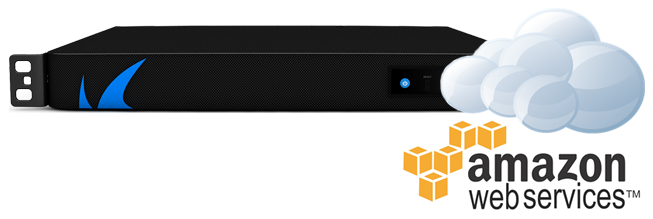What is a Cloud-Based Web Application Firewall?
A web application firewall (WAF) acts as a crucial security layer, protecting web applications from a multitude of cyber threats. Functioning as a reverse proxy, it meticulously examines incoming HTTP/HTTPS traffic, identifying and blocking malicious requests before they reach the application server. The primary role of a WAF is to mitigate common web exploits and attacks, such as SQL injection, cross-site scripting (XSS), and distributed denial-of-service (DDoS) attacks, ensuring the availability, security, and integrity of web applications.
Cloud-based WAFs, like an amazon web application firewall, offer significant advantages over traditional hardware-based solutions. Their inherent scalability allows them to adapt dynamically to fluctuating traffic volumes and evolving threat landscapes. This scalability is particularly relevant in the context of AWS, where applications can experience rapid growth and unpredictable traffic spikes. The cloud-based nature also simplifies deployment and management, reducing the operational overhead associated with maintaining physical infrastructure. Businesses can quickly deploy an amazon web application firewall without upfront hardware costs or complex configurations.
An amazon web application firewall provides centralized protection across multiple web applications, ensuring consistent security policies and simplifying management. Updates and security patches are typically handled automatically by the cloud provider, further reducing the administrative burden. The elasticity of the cloud allows the WAF to scale resources up or down based on demand, optimizing performance and cost efficiency. This makes cloud-based WAFs an ideal solution for organizations seeking robust, scalable, and cost-effective web application security. Embracing an amazon web application firewall is a strategic move for securing digital assets in today’s dynamic online environment. By filtering malicious traffic and preventing exploits, it enables businesses to maintain a secure online presence and protect sensitive data, providing a robust defense against evolving cyber threats, ensuring the continuous and secure operation of their web applications. An effective amazon web application firewall is a cornerstone of a comprehensive cloud security strategy.
AWS WAF: Your First Line of Defense
AWS WAF, or Amazon Web Application Firewall, stands as a robust cloud-based security solution designed to protect web applications from a myriad of threats. It integrates seamlessly with essential AWS services, including Application Load Balancer (ALB), API Gateway, and CloudFront, offering a comprehensive security shield for your online assets. The managed nature of AWS WAF simplifies deployment and maintenance, allowing organizations to focus on their core business objectives. With its pay-as-you-go pricing model, AWS WAF offers a cost-effective approach to web application security, scaling resources to match your specific needs.
The integration of the amazon web application firewall with Application Load Balancer enables filtering of malicious traffic before it reaches your web servers. This protects against common attacks like SQL injection and cross-site scripting (XSS). When used with API Gateway, AWS WAF secures your APIs from unauthorized access and abuse. Furthermore, integrating with CloudFront allows you to protect your content delivery network (CDN) from various web exploits, ensuring a secure and reliable user experience. The flexibility to define custom rules and leverage pre-configured rule sets makes amazon web application firewall a versatile tool for diverse security requirements.
One of the key advantages of AWS WAF is its managed nature, which reduces the operational overhead associated with traditional security solutions. AWS handles the underlying infrastructure and software updates, allowing you to focus on configuring the WAF to meet your specific security needs. The pay-as-you-go pricing model further enhances the value proposition, ensuring that you only pay for the resources you consume. This makes amazon web application firewall an ideal choice for organizations of all sizes, from startups to enterprises, seeking to enhance their web application security posture. By using amazon web application firewall, businesses can ensure high availability, protect sensitive data, and maintain compliance with industry regulations, all while optimizing costs and streamlining operations.
How to Deploy AWS WAF for Enhanced Web Security
Deploying an amazon web application firewall effectively enhances the security of your web applications. This involves a structured approach, encompassing several key steps to protect your applications from malicious attacks. Initially, one must choose the appropriate AWS service integration point. AWS WAF seamlessly integrates with services like Application Load Balancer (ALB), API Gateway, and CloudFront. The selection depends on where your web application traffic is managed. For applications using HTTP/HTTPS traffic distribution, ALB is a suitable choice. API Gateway benefits applications utilizing APIs, while CloudFront is ideal for content delivery networks. Selecting the right integration point is crucial for effective protection provided by the amazon web application firewall.
The next step involves creating a Web Access Control List (ACL). This acts as a container for the rules that will inspect and filter incoming web traffic. Within the Web ACL, you define rules that specify the conditions to be evaluated for each request. These conditions can include factors like the origin of the request (IP address, country), the content of the request (HTTP headers, body), or the size of the request. Furthermore, you can organize these rules into rule groups for easier management and reusability. Consider employing AWS Managed Rules, such as the Core Rule Set (CRS), to quickly implement baseline protection against common web exploits. These managed rules are pre-configured and maintained by AWS, saving you time and effort in creating your own rules from scratch. Configuring the amazon web application firewall requires a clear understanding of your application’s traffic patterns and security needs.
Finally, testing the configuration is essential to ensure the amazon web application firewall functions as expected without disrupting legitimate traffic. AWS WAF allows you to run rules in “count” mode, which logs matching requests without actually blocking them. This is a valuable tool for identifying potential false positives and fine-tuning your rules. Analyze the logged data to refine your rules and minimize any disruption to genuine users. Once you are confident in your configuration, you can switch the rules to “block” mode to actively protect your web application from threats. Regularly review and update your WAF rules to adapt to evolving threat landscapes and maintain optimal security posture for your web applications.
Core Rule Set: Leveraging Pre-Configured Security Rules
AWS Managed Rules for AWS WAF offer a streamlined approach to web application security. These pre-configured rule sets, including the Core Rule Set (CRS), provide immediate protection against common web exploits. The CRS is designed to defend against threats identified in the OWASP Top 10, such as SQL injection and cross-site scripting (XSS). Enabling the Core Rule Set for your amazon web application firewall is a straightforward process that significantly enhances your security posture.
The Core Rule Set within the amazon web application firewall acts as a foundational layer of defense. It examines incoming web requests for malicious patterns and automatically blocks or flags suspicious activity. This reduces the burden of manually creating and maintaining individual rules. The CRS is regularly updated by AWS security experts to address emerging threats. This ensures your web applications are protected against the latest attack vectors. While offering robust protection, it is essential to understand the pros and cons of using a managed rule set versus custom rules.
A key advantage of using the CRS for your amazon web application firewall is its ease of deployment and maintenance. AWS handles the ongoing updates and fine-tuning, saving you time and resources. However, because the CRS is a general-purpose rule set, it may not perfectly align with the specific security needs of every application. Custom rules provide granular control and allow you to tailor your WAF configuration to address unique vulnerabilities or business requirements. Consider a layered approach. Start with the CRS for broad protection and then supplement it with custom rules to address specific application needs. This provides a balance between ease of use and customized security.
Creating Custom WAF Rules: Tailoring Security to Your Application
To address the specific security vulnerabilities of a web application, creating custom rules within the amazon web application firewall becomes essential. These tailored rules allow for a nuanced defense, going beyond the generalized protection offered by managed rule sets. AWS WAF offers a variety of rule types to suit diverse security needs. String match rules can block requests containing specific text patterns, useful for preventing common exploits or blocking access from known malicious user agents. Regular expression (regex) match rules provide more advanced pattern matching capabilities, allowing for the detection of complex attack patterns. Geo match rules enable blocking or allowing traffic based on the originating country, a valuable tool for mitigating attacks from specific regions. Size constraint rules can limit the size of request bodies, preventing buffer overflow attacks or the uploading of excessively large files. The amazon web application firewall empowers you to define the actions to take when a rule is matched, such as blocking the request, allowing the request, or counting the request for monitoring purposes.
Configuring these custom rules involves specifying the match condition, which defines the criteria for a request to be considered a match. This includes selecting the part of the request to inspect, such as the URI, query string, headers, or body. For example, to block SQL injection attempts, a regex match rule can be created to search for common SQL injection keywords in the query string. Similarly, to prevent cross-site scripting (XSS) attacks, a rule can be configured to look for HTML or JavaScript code in the request body. Best practices for writing effective custom rules include keeping the rules specific and focused to minimize false positives. Thoroughly testing the rules in a non-production environment before deploying them to production to ensure they function as intended without disrupting legitimate traffic is essential. Also, regularly reviewing and updating the rules to adapt to evolving threat landscape is important to keep your amazon web application firewall up to date.
Consider a scenario where your application experiences frequent attempts to access administrative URLs from unauthorized IP addresses. A custom rule can be created using the “IP match” condition to block all requests originating from those specific IPs. Another example involves protecting against a specific vulnerability in a third-party library used by your application. A string match rule can be implemented to block requests containing specific patterns associated with that vulnerability. When creating custom rules for your amazon web application firewall, thorough documentation of the rule’s purpose and logic is crucial for maintainability and troubleshooting. By carefully crafting custom rules, you can create a robust security posture that addresses the unique needs of your web application, offering a powerful complement to managed rule sets and enhancing your overall protection against web-based attacks. Leveraging the flexibility of AWS WAF’s custom rule capabilities enables organizations to tailor their security measures precisely to their specific application context.
Analyzing WAF Logs and Monitoring Security Events
Effective security relies on diligent monitoring and analysis. AWS WAF offers robust logging capabilities, allowing comprehensive insight into potential threats targeting your web applications. Configuration involves directing AWS WAF to log security events to either CloudWatch Logs or Amazon S3. Each option offers distinct advantages for analysis and long-term storage. CloudWatch Logs provides real-time monitoring and alerting, while S3 offers cost-effective storage for historical data, crucial for forensic analysis and compliance.
Analyzing AWS WAF logs is paramount for understanding attack patterns and refining security rules. By examining log data, one can identify prevalent attack vectors, source IP addresses involved in malicious activity, and the specific WAF rules triggered by these attempts. This information is crucial for tuning the amazon web application firewall rules to improve accuracy and reduce false positives. For instance, if logs reveal a surge in SQL injection attempts originating from a specific region, the amazon web application firewall administrator can create or modify rules to specifically target this traffic. Similarly, analyzing logs can highlight rules that are inadvertently blocking legitimate traffic, allowing for adjustments to minimize disruptions to users. The amazon web application firewall logs provide invaluable data for optimizing the performance and effectiveness of the web application’s security posture. Analyzing logs helps improve overall security posture by identifying vulnerabilities and proactively addressing them before they can be exploited.
CloudWatch metrics play a vital role in monitoring the health and efficacy of your amazon web application firewall deployment. These metrics offer real-time visibility into key performance indicators, such as the number of blocked requests, the rate of matched rules, and the overall traffic volume. By tracking these metrics, administrators can quickly identify anomalies and potential security incidents. For example, a sudden spike in blocked requests could indicate an ongoing attack, prompting immediate investigation and response. Furthermore, CloudWatch metrics can be used to establish baselines for normal traffic patterns, making it easier to detect deviations that might indicate malicious activity. Integrating CloudWatch alarms can automate responses to specific events, such as triggering notifications when the number of blocked requests exceeds a predefined threshold. These metrics provide crucial insights into the amazon web application firewall‘s performance and help maintain a strong security defense. Therefore, leveraging both WAF logs and CloudWatch metrics offers a comprehensive approach to monitoring and managing the security of your web applications, ensuring a proactive and responsive defense against evolving threats.
Beyond the Basics: Advanced WAF Configuration and Integration
To enhance the security posture of web applications, the amazon web application firewall offers advanced features and integration options beyond basic rule configurations. Rate-based rules are crucial for mitigating Distributed Denial of Service (DDoS) attacks. These rules allow administrators to set a threshold for the number of requests allowed from a specific IP address within a defined time period. When the threshold is exceeded, the WAF can block or challenge the traffic, preventing application downtime and resource exhaustion. Geo restrictions provide another layer of defense by enabling administrators to block traffic originating from specific countries known for malicious activity. This is especially useful when an application primarily serves users from a particular geographic region.
Integration with third-party threat intelligence feeds enhances the amazon web application firewall’s ability to identify and block malicious traffic. These feeds provide up-to-date information on known bad actors, malicious IP addresses, and emerging threats. By subscribing to a threat intelligence feed, the WAF can automatically update its rules and protect against the latest attacks. Furthermore, the amazon web application firewall can be automated through AWS CloudFormation or Infrastructure as Code (IaC) tools. This allows organizations to define and deploy their WAF configurations in a consistent and repeatable manner, ensuring that security policies are consistently applied across all web applications. Automating the deployment process also streamlines updates and changes, reducing the risk of human error and improving overall security.
Advanced configurations of the amazon web application firewall also include the use of custom error pages and response codes. When the WAF blocks a request, it can return a custom error page to the user, providing a more user-friendly experience. Custom response codes can be used to signal to other security systems that a request has been blocked by the WAF. This integration with other security tools allows for a more coordinated and effective security posture. Organizations can also leverage the WAF’s API to programmatically manage and monitor their WAF configurations. This allows for greater flexibility and control over the WAF, enabling organizations to tailor their security policies to their specific needs. Through these advanced features, the amazon web application firewall provides a comprehensive and adaptable solution for securing web applications against a wide range of threats. The amazon web application firewall is an invaluable asset.
Securing Your Web Applications with AWS WAF: Best Practices
Securing web applications requires a proactive and vigilant approach. AWS WAF, or Amazon Web Application Firewall, offers a robust solution, but its effectiveness hinges on adhering to best practices. Regularly reviewing WAF rules is paramount. The threat landscape is constantly evolving, and rules that were effective yesterday might be insufficient today. It’s crucial to stay informed about emerging vulnerabilities and adapt WAF rules accordingly. An Amazon web application firewall that is not properly maintained will not provide adequate protection. Consistent rule evaluation ensures the amazon web application firewall remains a strong defense.
Monitoring logs is equally important. AWS WAF logs provide invaluable insights into attack patterns and potential vulnerabilities. Analyzing these logs helps identify trends, fine-tune WAF rules, and proactively address security weaknesses. Consider setting up automated alerts for suspicious activity to enable rapid response. Staying up-to-date with security threats is a continuous process. Subscribe to security advisories, attend webinars, and participate in security communities to remain informed about the latest threats and best practices. Implement an amazon web application firewall and keep learning. This knowledge empowers you to configure your Amazon web application firewall effectively and protect your applications from emerging attacks.
Testing your Amazon web application firewall configuration regularly is vital. Don’t wait for an actual attack to discover vulnerabilities in your WAF setup. Conduct penetration testing and vulnerability scanning to identify weaknesses and ensure that your WAF rules are functioning as intended. Employ tools that simulate real-world attacks to assess the resilience of your web applications. By following these best practices, organizations can maximize the benefits of AWS WAF and establish a strong security posture for their web applications. Remember that an amazon web application firewall is a critical component of a comprehensive security strategy.



